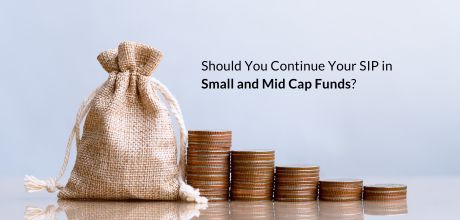3 Smart Applications of Liquid Funds

Liquid Funds offer stability, liquidity, and better returns than savings accounts, making them ideal for emergencies, STPs, and parking booked profits. They're a smart way to keep your money working efficiently!
If you’re a Mutual Fund investor, you’ve probably heard about Liquid Funds. These are a type of debt oriented mutual fund that invest into very short maturity fixed income instruments. Typically, liquid funds invest into short term borrowings that are due to mature in a month or less, and this eliminates volatility to a large extent by cutting the interest rate sensitivity associated with the fund. Here are three smart ways in which you can use Liquid Funds in your portfolio.
Building an Emergency Corpus
Given their essentially non-volatile nature, liquid funds are ideal for parking moneys that may be required in an emergency. The worst year returns for most top ranked liquid funds have seldom been below 4%, and the past 3-5-year returns have steadily fallen in the 7-7.5% (annualised) returns bracket. It would be prudent to put away some amount of your savings regularly in a liquid fund, as you can now redeem up to Rs. 50,000 from each fund instantly into your bank account too. For your emergency corpus, Liquid Mutual Funds Sahi hai!
Systematic Transfer Plans
Liquid Funds are also an ideal passthrough vehicle for your Systematic Transfer Plans (STP’s). STP’s are an automated instruction that transfers a fixed sum of money from one mutual fund scheme to another at predetermined intervals. Whether you’re using STP’s to stagger money into the equity markets, or to systematically book profits out of them, liquid funds make for an ideal fund in both cases. The steady nature of their returns, coupled with their low inbuilt charges and non-existent exit loads, make liquid funds extremely efficient for this purpose.
Temporary Parking Space for Booked Profits
Planning to book profits from your equity funds? Look no further than liquid funds – as a temporary parking space, Liquid Mutual Funds Sahi Hai! Instead of redeeming moneys into your savings account (where you’ll earn barely 4% and be tempted to spend your money as well), switch the booked profits into a liquid fund instead. Once you choose to redeploy the moneys into longer term investments, you can simply switch the funds back in a costless and convenience manner!
FAQs
1. How can liquid funds be utilized to build an emergency corpus?
Liquid funds are suitable for creating an emergency corpus due to their low volatility and relatively stable returns. They invest in short-term instruments with maturities of a month or less, reducing interest rate sensitivity. Historically, top-ranked liquid funds have provided annualized returns between 7-7.5% over 3-5 years. Additionally, investors can redeem up to ?50,000 instantly into their bank accounts, ensuring quick access to funds during emergencies.?
2. What makes liquid funds ideal for Systematic Transfer Plans (STPs)?
Liquid funds serve as effective vehicles for STPs because of their steady returns, low charges, and absence of exit loads. An STP allows investors to automate the transfer of a fixed sum from one mutual fund scheme to another at predetermined intervals. Whether you're gradually investing in equity markets or systematically booking profits, liquid funds provide an efficient and cost-effective medium for these transfers.?
3. Why are liquid funds recommended for temporarily parking booked profits?
When booking profits from equity funds, parking the proceeds in liquid funds is advantageous. Unlike savings accounts that offer lower interest rates (around 4%) and may tempt spending, liquid funds provide better returns and maintain liquidity. This approach ensures that your funds continue to work for you until you're ready to redeploy them into longer-term investments.
Your Investing Experts
Relevant Articles
How To Select The Best Mutual Funds For Long Term Goals
Mutual funds offer a compelling way to invest for long-term goals, leveraging professional management and diversification to potentially achieve significant returns. But with a vast array of options available, selecting the best mutual funds for the long term can feel daunting. This guide will equip you with the knowledge to confidently navigate the mutual fund landscape and learn how to select the best mutual fund aligned with your long-term aspirations.
Should You Continue Your SIP in Small Cap Mutual Funds
Investing in small cap funds requires patience and discipline, especially during market corrections. By staying committed to your SIPs and focusing on long-term goals, you can leverage the power of rupee cost averaging and compounding. Don’t let short-term market noise dictate your strategy—remain focused, stay the course, and trust that your disciplined approach will yield results over time.
Systematic Withdrawal Plans (SWP): A Reliable Way to Generate Regular Income
An SWP allows investors to withdraw a predetermined amount from their mutual fund investments at regular intervals, such as monthly, quarterly or annually. The beauty of SWPs lies in their flexibility—they provide consistent income while allowing the remaining investment to continue growing.
.png)


_(2).jpg)